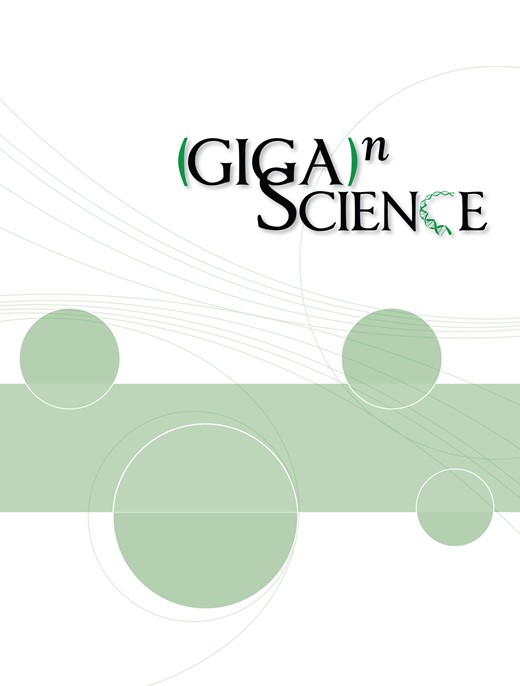IPEV:利用深度学习识别病毒体中的原核和真核病毒衍生序列
IF 11.8
2区 生物学
Q1 MULTIDISCIPLINARY SCIENCES
引用次数: 0
摘要
背景 通过病毒样颗粒富集获得的病毒体包含原核和真核病毒衍生片段的混合物。要了解病毒在微生物群落中的作用和功能,对这些片段进行准确鉴定和分类至关重要。然而,病毒基因组的快速突变率给开发高性能分类工具带来了挑战,可能会限制下游分析。研究结果 我们介绍了 IPEV,这是一种区分病毒组中原核和真核病毒的新方法,它采用了一种结合三核苷酸对相对距离和频率的二维卷积神经网络。对 IPEV 进行的交叉验证评估证明了其先进的精确度,当查询病毒与已知病毒的序列相似度低于 30% 时,与现有方法相比,IPEV 在独立测试集上的 F1 分数显著提高了约 22%。此外,在基于序列比对注释的海洋和肠道病毒组样本上,IPEV 的精确度也优于其他方法。在相同的计算配置下,IPEV 的运行时间比现有方法最多缩短了 1,225 倍。我们还利用 IPEV 对纵向样本进行了分析,发现肠道病毒组表现出比以前在持久性个人病毒组中观察到的更高程度的时间稳定性,为了解个人肠道病毒组的恢复能力提供了新的视角。结论 IPEV 是一种高性能、用户友好型工具,可帮助生物学家识别病毒组中的原核和真核病毒并对其进行分类。该工具可在 https://github.com/basehc/IPEV 上获取。本文章由计算机程序翻译,如有差异,请以英文原文为准。
IPEV: identification of prokaryotic and eukaryotic virus-derived sequences in virome using deep learning
Background The virome obtained through virus-like particle enrichment contains a mixture of prokaryotic and eukaryotic virus-derived fragments. Accurate identification and classification of these elements are crucial to understanding their roles and functions in microbial communities. However, the rapid mutation rates of viral genomes pose challenges in developing high-performance tools for classification, potentially limiting downstream analyses. Findings We present IPEV, a novel method to distinguish prokaryotic and eukaryotic viruses in viromes, with a 2-dimensional convolutional neural network combining trinucleotide pair relative distance and frequency. Cross-validation assessments of IPEV demonstrate its state-of-the-art precision, significantly improving the F1-score by approximately 22% on an independent test set compared to existing methods when query viruses share less than 30% sequence similarity with known viruses. Furthermore, IPEV outperforms other methods in accuracy on marine and gut virome samples based on annotations by sequence alignments. IPEV reduces runtime by at most 1,225 times compared to existing methods under the same computing configuration. We also utilized IPEV to analyze longitudinal samples and found that the gut virome exhibits a higher degree of temporal stability than previously observed in persistent personal viromes, providing novel insights into the resilience of the gut virome in individuals. Conclusions IPEV is a high-performance, user-friendly tool that assists biologists in identifying and classifying prokaryotic and eukaryotic viruses within viromes. The tool is available at https://github.com/basehc/IPEV.
求助全文
通过发布文献求助,成功后即可免费获取论文全文。
去求助
来源期刊

GigaScience
MULTIDISCIPLINARY SCIENCES-
CiteScore
15.50
自引率
1.10%
发文量
119
审稿时长
1 weeks
期刊介绍:
GigaScience seeks to transform data dissemination and utilization in the life and biomedical sciences. As an online open-access open-data journal, it specializes in publishing "big-data" studies encompassing various fields. Its scope includes not only "omic" type data and the fields of high-throughput biology currently serviced by large public repositories, but also the growing range of more difficult-to-access data, such as imaging, neuroscience, ecology, cohort data, systems biology and other new types of large-scale shareable data.
 求助内容:
求助内容: 应助结果提醒方式:
应助结果提醒方式:


